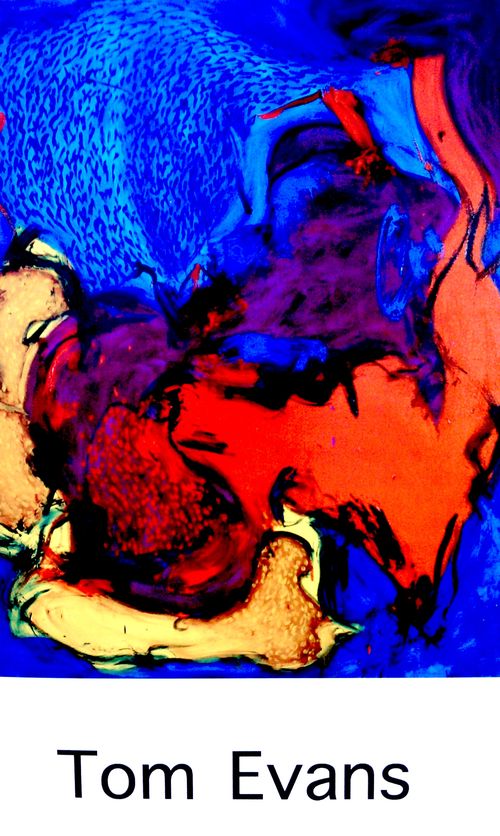
James writes:
I am delighted that the painter Tom Evans asked me to write the catalogue essay for his upcoming exhibition at Sideshow. A show of Tom's new work is a rare, must-see event in New York's alternative art circles. See you at the opening on November 19!
CATALOGUE ESSAY
TOM EVANS: New Paintings
by James Panero
Exhibition on view at Sideshow Gallery, Williamsburg, from November 19 through December 18, 2011.
Opening Saturday, November 19, 6-9pm.
“Old men and comets have been reverenced for the same reason: their
long beards, and pretenses to foretell events”
--Jonathan Swift
Somewhere out in deep space is Tom Evans. This master of abstraction
circulates through the art world in a long twelve-to-fifteen year
orbit. That’s more than enough time for everyone to forget who he was
and what he can do. I rather admire this quality in him.
Of course, Tom never really disappears, but he seems particularly
skilled at receding from public view. He still attends the gallery
openings of his many friends in the New York art community. In
particular he stays close to the abstract painters who came of age
with him downtown in the 1970s. But he never reveals all that much
when you run into him. A few portentous remarks, which don’t really
register at the time, might emanate from behind his beard.
Online, he is no different. Tom has no Internet presence. A Google
search for “Tom Evans artist” will pull up a different Tom Evans who
also happens to be from Minnesota. In an age when most artists have
become their own pitchmen and social-media gadflies, Tom has only
recently upgraded to a hand-cut business card. Wherever he is, he
appears blissfully detached from the hustle of a career.
Instead Tom lets the studio determine his progress. He never got the
memo that painting is dead, or that art should be theoretical, or that
you need to sound good to sell work. I doubt he realizes art is
supposed to be a joke. Instead what you get with Tom is an artist who
never stopped processing the ways to make a painting. He works
diligently in the same live-work studio in Tribeca he has occupied
with his family since the 1970s.
Tom’s drawn-out absences give his periodic reappearances their
excitement. He stays away so that we will be all the more dazzled by
the emergence of his latest work, perfected through years in the
studio. Tom has operated this way since he burst onto the scene forty
years ago with shimmering, frightening metallic scrims created through
a self-invented process of pleating canvas on the studio floor. “The
effect is both lustrous and dour, a slightly toxic variation on the
modernist monochrome” wrote Roberta Smith in the The New York Times,
when these works made a critically praised reappearance a few years
back.
After departing from this truly toxic medium, Tom reappeared with
abstractions of dense, packed gestures in which fugitive images float
in and out of view. Some time later, out came an entirely different
mode: paintings of outlandish carnival figures with desultory dental
hygiene. That work promptly ended up in the New Museum.
Whenever Tom comes back around with new work, his paintings crack open
the sky with the brilliance of a comet. His latest abstractions may be
the boldest work to date. “I really have to make paintings that will
punch people in the face,” he confides in me as we review his new work
in the studio.
These latest creations are the products of a lifetime of pushing and
pulling and punching with paint. They appear elemental: an alchemy of
fire and ice and volatile chemicals. They present for our
interpretation embryonic images of faces, animals, and volcanic
islands. “They need to be loose, vibrant, in a state of flux,” Tom
explains. “They need to look like something in perpetual movement.”
These painterly dynamics do not come by chance. “There’s no irony in
the paintings I’ve done,” Tom concludes. After seeing his work radiate
like flaming bolts from heaven, I have no doubt he’s serious.
